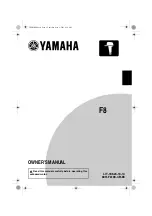
Principle of Operation
863
SLAU367P – October 2012 – Revised April 2020
Copyright © 2012–2020, Texas Instruments Incorporated
REF_A
33.2 Principle of Operation
The REF_A module provides all of the necessary voltage references for use by various peripheral
modules throughout the system.
The REFGEN subsystem contains a high-performance bandgap. This bandgap has very good accuracy
(factory trimmed), low temperature coefficient, and high PSRR even while operating at low power. The
bandgap voltage is used to generate three voltages (1.2 V, 2.0 V, and 2.5 V) through a noninverting
amplifier stage. One voltage can be selected at a time. One output of the REFGEN subsystem is the
variable reference line. The variable reference line provides either 1.2 V, 2.0 V, or 2.5 V to the rest of the
system. The second output of the REFGEN subsystem is the buffered bandgap reference line.
Additionally, the REFGEN supports the voltage references that are required for a DAC module, if
available. Lastly, the REFGEN subsystem also includes the temperature sensor circuitry, which is derived
from the bandgap. The temperature sensor is used by an ADC to measure a voltage proportional to
temperature.
33.2.1 Low-Power Operation
The REF_A module can support low-power applications such as LCD generation. Many of these
applications do not require a very accurate reference, compared to data conversion, yet power is of prime
concern. To support these kinds of applications, the bandgap can be used in a sampled mode. In sampled
mode, the bandgap circuitry is clocked by the VLO at an appropriate duty cycle. This reduces the average
power of the bandgap circuitry significantly, at the cost of accuracy. When not in sampled mode, the
bandgap is in static mode. Its power is at its highest, but so is its accuracy.
Modules can request static mode or sampled mode through their own individual request lines. In this way,
the particular module determines which mode is appropriate for its proper operation and performance. Any
one active module that requests static mode causes all other modules to use static mode, even if another
module requests sampled mode. For example, any module using the gray box in the
requests static mode and causes all other modules to use static mode. In other words, static mode always
has higher priority than sampled mode.
33.2.2 Reference System Requests
There are three basic reference system requests that are used by the reference system. Each module can
use these requests to obtain the proper response from the reference system. The three basic requests are
REFGENREQ, REFBGREQ, and REFMODEREQ. No interaction is required by the user code. The
modules automatically select the proper request.
A reference request signal, REFGENREQ, is available as an input into the REFGEN subsystem. This
signal represents a logical OR of individual requests coming from the various modules in the system that
require a voltage reference to be available on the variable reference line. When a module requires a
voltage reference, it asserts its corresponding REFGENREQ signal. When the REFGENREQ is asserted,
the REFGEN subsystem is enabled. After the specified settling time, the variable reference line voltage is
stable and ready for use. The REFVSEL settings determine which voltage is generated on the variable
reference line.
After the specified settling time of the REFGEN subsystem, the REF_A module sets the REFGENRDY
signal. This signal can be used by each module to wait, for example, before a conversion is started after a
REFGENREQ was set. The generation of the reference voltage can be triggered by a timer or by software
to make sure that the reference voltage is ready when a module requires it.
In addition to the REFGENREQ, a second reference request signal, REFBGREQ, is available. The
REFBGREQ signal represents a logical OR of requests coming from the various modules that require the
bandgap reference line. When the REFBGREQ is asserted, the bandgap and its bias circuitry and local
buffer are enabled, if not already enabled by a prior request.
After the specified settling time of the REFBGREQ subsystem, the REF_A module sets the REFBGRDY
signal. This signal can be used by each module to delay operation while the bandgap reference voltage is
settling. The generation of the buffered bandgap voltage can be triggered by a timer or by software to
make sure that the reference voltage is ready when a module requires it.
















































